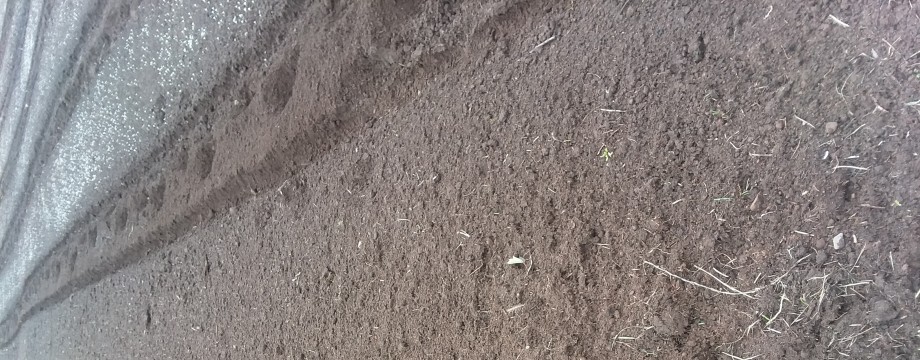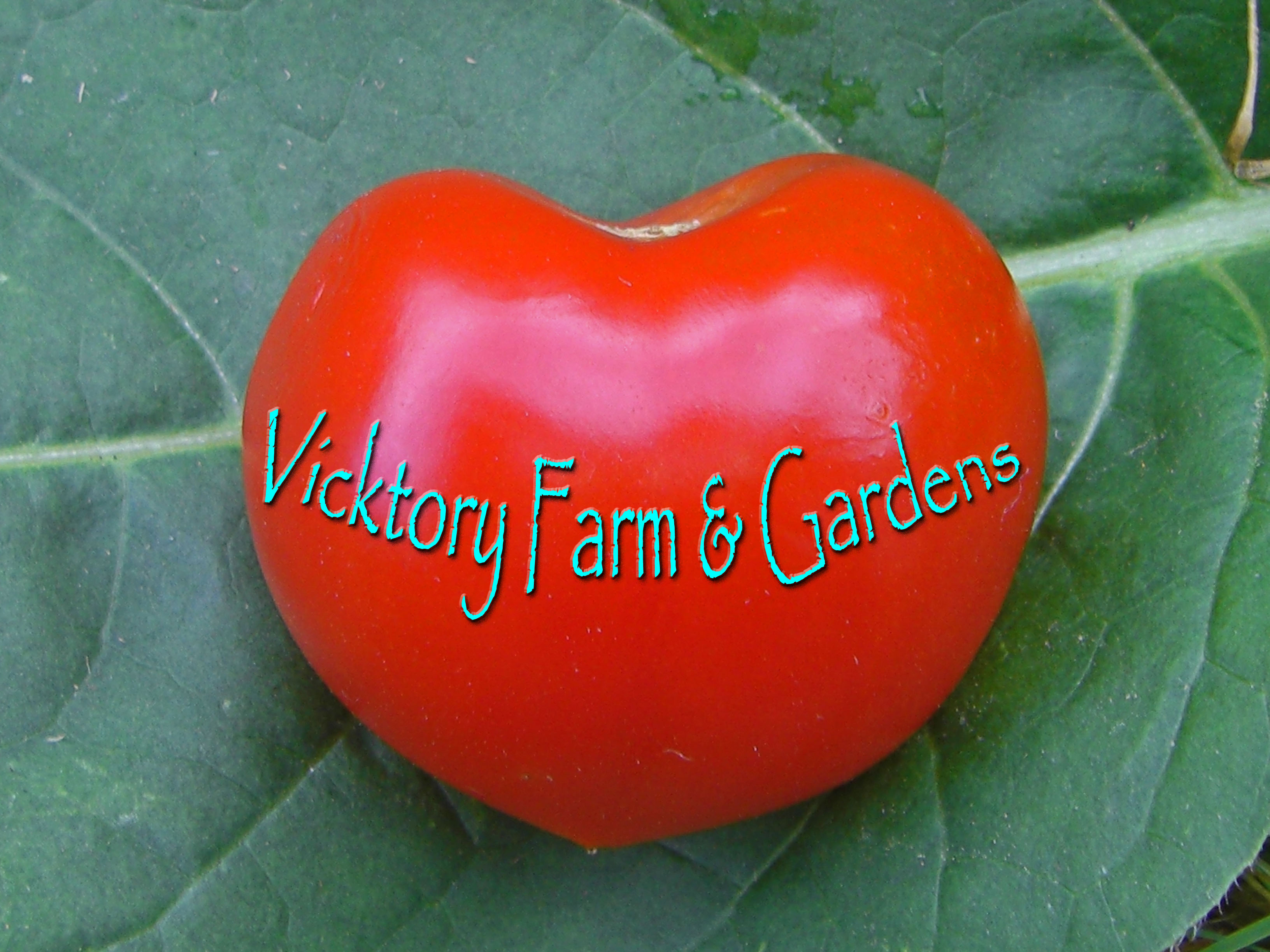So I had a lot to say about raised beds or deep beds or whatever you wish to call them in my post, A Well Raised Bed, A Changed Gardener. I said that raised beds are really the beginning of season extension. (But remember, I am no expert on anything.) To review:
- Raised beds allow you to work in your garden earlier than normal, when the soils usually would be too cold and wet, once you have them are established in the fall before.
- Raised beds allow you to plant way more stuff in less space.
- You can use “raised bed method” in the vegetable, ornamental or mixed garden.
- DO NOT use any type of building material or natural material to make sides for your beds, they will stand just fine on their own.
- Side boards LEACH nasty stuff into your garden soil and harbor bugs and SLUGS (and they often cost money)
- Make your beds four feet wide.
- You can “build” up a bed by sheet composting right on top of sod or weeds if you use over six inches of material.
Here are some points I would like to clarify or slip in because I forgot them:
- Make your beds as long as you want to walk from the middle of to get a tool you left four beds over. And come on, that has got to be longer than four feet! The fewer cross paths the more veggies, flowers and herbs.
- Cover your beds with mulch once you make them up if you are not planting right away, it protects from erosion and weeds.
- Cover with leaves, fir boughs, grass trimmings, straw, or even plastic, avoid hay or other weed seedy material, rubber tires, your car, your neighbors house siding…
- Hog fuel is the stuff the roadside tree trimmers mulch up in their big trucks, layered with good fresh manure it will make good soil in a year-ish.
- Use hog fuel in your paths if they are slimy like mine. Or you may find you need hip replacements. I don’t, I just think if I slip anymore I just might need something replaced!
- Most of my paths are two feet wide. Some are wider so that I can get the wagon closer to my work but rarely are they over three feet (okay, I can not think of one over three feet, I just said that to cover my hiney if you come and find one.)

That whole four foot wide thing is rather arbitrary but I can comfortably reach more than half way across a bed that is four feet wide at the base. Sometimes, because of how much room I have in an area, the bed might be less wide but rarely more.
So here is a little somethin’ more about the whole “you can plant way more in less space” thing. If you normally make a row for a vegetable and then walk next to it, you need lots of space to walk and the veg needs a little extra leg room ’cause your kinda squishing his feet when you walk all over them.
That is why on the back of a seed packet you will read, “space three inches apart and eighteen inches between rows.” or some such nonsense. The row space is rarely less than eighteen inches no matter what the veg is. But I don’t walk on my beds, so I am not squishing any one’s feet therefore I can just make sure that the veg has its “in row” spacing all around it.

It is called equidistant spacing. Check out the board in the picture. It has dowels set every eight inches (I’m pretty sure this was my eight inch one) Dirt made it for me and I use it to mark where I put the hole for the seed, or it actually makes the holes for me. In the picture above this one, you can see I have pressed it on to the top of a well raked bed. Because I was planting garlic last fall I am using a dibble, okay the handle of my claw, to make larger holes for the garlic.
Garlic does not need to be eight inches apart. But now this spring I will come along with lettuce plants and set them in between my garlics.

Essentially equidistance looks like this diagram. If you picked one of the plants. like say that loverly red leaf-ed number there in the middleish, any plant next to it would be the same distance as the others. (It may have gotten distorted so this drawing may not be accurate. And you have to consider the base, so base to base. )
Can you see how it is a series of equilateral triangles? And around the red plant is a hexagon? It is all so geometrically wonderful and so Fibonacci, Golden Mean -ish that it can’t be anything but beautiful right? You can use this set up for any distance, well it gets a little dicey at the thirty-six inch distances but I don’t know anything that really needs that much room, well maybe Purr Bobb does but he isn’t supposed to be in my garden.
I find that because I do not walk on the soil and it is fluffed originally very deep, and I am constantly adding stuff back into the beds that I can really tighten up plant spacings. When I companion plant it is even better space savings because someone may be a deeper rooted plant that his neighbor.
Well that was just meant to be a quick review because I wanted to begin talking about other season extenders. Raised beds drain and warm quicker but that may not be enough to get a little jump on the season.
One thing Dirt and I like to build are hoop houses. Basically it fits over one bed.

Like this one that I planted some beets, lettuce and spring greens in a couple of weeks ago. Some of the things I planted can handle the cold soils and some need a little boost, the garlic won’t mind the rise in temperature as long as the day length doesn’t change.
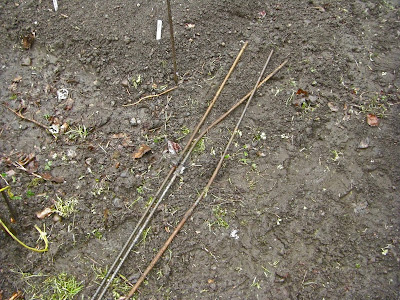
I use about a three foot length of rebar for every six or so feet of bed on each side. I push or pound the rebar stakes in the edge of the bed starting at the corners and walking off about six feet, then matching the placement on the other side.
Then I slip a ten foot section of PVC pipe over the rebar making hoops over the garden.

The ten foot wide by however long the bed is long plastic then goes on top of the hoops. It is held in place by wider pvc pipe cut length wise. It is a good idea to melt the edges of the clamps so they tear the plastic less.
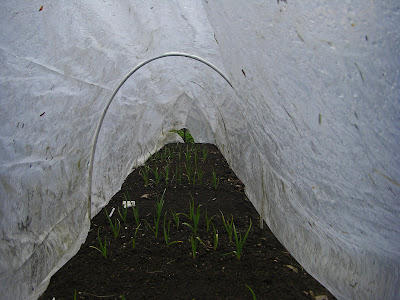
If I need to work in the bed I can just roll the plastic up and hold it in place with a clamp. The plastic gets pretty dirty getting on the hoops, but I just make sure I protect the inside of the film and the rain takes care of the outside of the film.
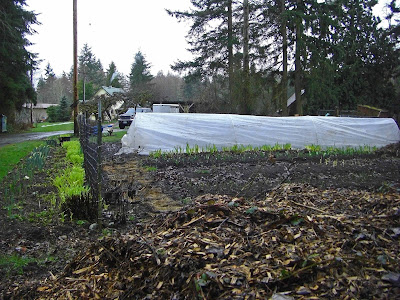
Sometimes I get so impatient for the season that I end up with several of these in my garden. Depending on the year, I keep one up over the tomatoes with the sides rolled up half or three quarters of the way most of the time. In the fall I employ a slightly taller version (and less stable) to go over my dahlias and chrysanthemums.
Oh, by the way, that stuff right there in the front of the picture, that is hog fuel. I get it free and delivered if I chase the road crews that trim the trees from the power lines, I just give them my name, address and where I want it dumped and I get it in a couple of days.
I would love one of those giant chippers. The little household lawn and garden jobbies are a silly waste of time for the amount I need and the amount of tree limbs I deal with.
.
But then I really don’t need need it.
.
Dear Reader, I hope that whether my info helped you or not or just made you laugh at some point, that you are able to get out and get gardening, even if it is restacking your supplies while the snow falls. I hope you get out to visit some of the other gardens around, there are as many styles to gardening as there are poppies in California, go see some. And let the gardener know you have come by, and appreciate the work that he or she has done.

